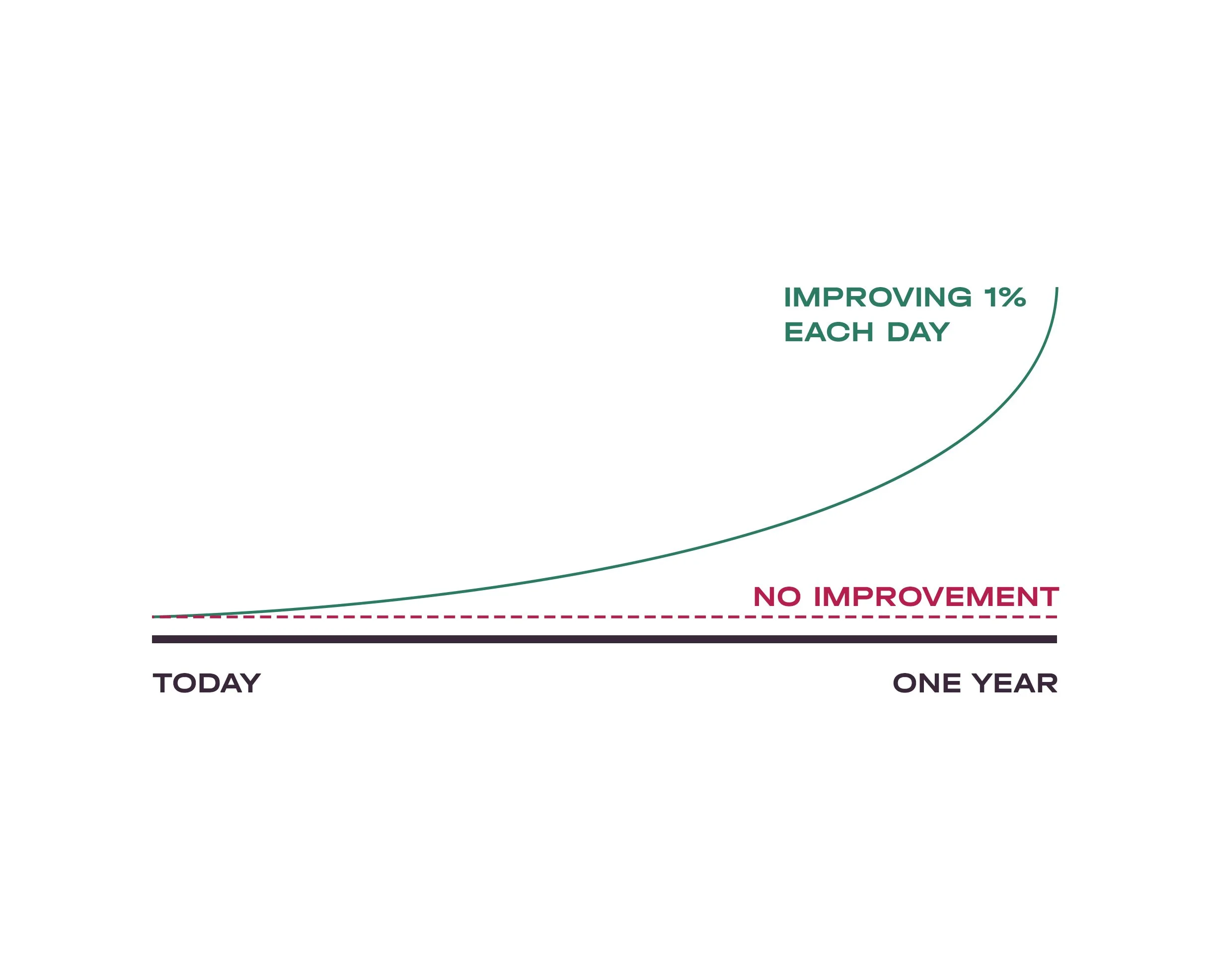How to Build a Habit: The Essential Lessons from Atomic Habits
Want to know how to build a habit? These essential lessons from Atomic Habits are exactly what you need!
Regardless of what your goals are, you have a lot to gain from understanding and implementing the helpful advice provided by James Clear in his incredible book Atomic Habits.
Whether you want to lose weight, read more, or (if you’re reading this) grow your graphic design skill, it can’t be understated how important healthy habits are to your progression.
Since reading Atomic Habits last year, I’ve become a bit obsessed with progression. I’m now one of those people who use a bunch of apps and spreadsheets to measure progression, but we won’t get into that.
James covers a tonne of subjects in Atomic Habits, so I’ve cherry-picked a few that I think will best help you progress your graphic design (or really any) skill.
Get 1% Better Every Day
Get 1% Better Each Day diagram from the 13 Diagrams Collection.
Regardless of the reason that you want to build a habit, everything boils down to wanting to improve. One of the main lessons of Atomic Habits is the concept of improving every single day.
That sounds lofty, but don’t worry. You don’t need to be making leaps and strides every day of your life, pushing yourself to the limit at all times.
Instead, you should focus on becoming gradually better – 1% better.
As James puts it “Habits are the compound interest of self-improvement… You are what you repeat.”
He highlights the importance of forgetting about goals, instead focusing on systems. That may sound strange, but he rationalises it by saying that goals have natural conclusions, whereas building healthy systems are ongoing. When a goal ends, the behaviours that helped you get there typically end too.
With habits, there’s no end. You continue making progress.
Focus on Compound Improvement
If you’ve ever studied investing – and let’s face it, who didn’t during the 2022 crypto boom? – you’ll likely have seen the term “compound interest” thrown around like nobody’s business.
Essentially, it’s the concept that small improvements over a long period of time add up to huge changes. I think you can see where this is going.
When you’re improving 1% each day (as seen above) you may not even see the results day by day. This is entirely normal, but can be a little discouraging when you’re not expecting it.
This is where compound improvement comes in.
To use losing weight as an analogy, you won’t see changes day by day, at least not huge ones. However, when you stick to your healthy habits of eating right and exercising every day, you see huge changes when you compare this month’s weight to last month’s.
It boils down to this: don’t be discouraged when you don’t see immediate results. Have faith that the work you’re putting in right now will allow you to reap huge rewards later on down the line.
It’s pretty much the embodiment of that much-used phrase: Trust the process.
Use The Habit Loop to Build Habits
Habit Loop diagram from the 13 Diagrams Collection.
The Habit Loop is the cornerstone of Atomic Habits, and something that is referred to over and over throughout the book.
To quote Charles Duhigg, author of The Power of the Habit: “The Habit Loop is a neurological loop that governs any habit. The habit loop consists of three elements: a cue, a routine, and a reward. Understanding these elements can help in understanding how to change bad habits or form better ones.”
The Cue
This is where you recognise the trigger of a habit. For example, the cue could be a specific time, or when you finish work, or when you first wake up.
The Routine
Once you’ve moved past the Cue, you begin the routine. If you see it’s 9am, you switch on your laptop and start replying to emails, for example.
The Reward
When you’ve checked through your email, it’s time to reward yourself. Maybe five minutes of scrolling through your favourite social media app, for example.
Conclusion
There are, of course, so many different lessons and take-aways from Atomic Habits that the only way to really reap the benefit is to buy the book. However, the three above are those that I personally found really helpful when looking to integrate healthy habits in my own life.
Because you’re reading an article about building habits, I’m going to go ahead and assume you have an interest in personal development. If that’s true, then I have something special for you.
In this article, I’ve written about five different productivity systems that’ll help you achieve more throughout your day, and also help to reduce stress – something we all need!
Check out Staying Productive: 5 Systems to Help You Achieve More and Reduce Stress.











![The Anatomy of a Perfect Blog Post: Structure, SEO, and Engagement [INFOGRAPHIC]](https://images.squarespace-cdn.com/content/v1/5cfebab7bfcecb000194cc60/1739551006784-EHEIBO7KO3PAYMG8VB54/07+-+Cover+-+The+Anatomy+of+a+Perfect+Blog+Post+Structure%2C+SEO%2C+and+Engagement+%5BINFOGRAPHIC%5D.png)


